Experts Explain How To Create 7 Common Nail Shapes + Which Is Best For You
Selecting a nail shape, we admit, is not high on the list of life's highest priorities, but it's not completely frivolous. After all, your nail shape can determine the vibe of your entire manicure, whether you're looking for a sharp, modern square or elongating oval. And especially if you're attempting the at-home mani, an expert file can make your tips look salon-professional.
All shapes are striking and unique, so it's not necessarily about which form you choose—it's whether you execute them correctly. Below, experts uncover how to file down seven of the most common nail shapes, plus how to tell which is best for your fingertips.
Your nail-shaping basics.
You can't sport an immaculate, expert-level nail shape without some filing 101. So let's begin: First, your clippers can literally make or break your nail shape. Cut into the nail straight-on, and you can cause splits and cracks in the nail plate. "I always say to cut from one side of the nail into the middle, and then from the other side into the middle," says Elle, a celebrity nail tech. "This way the nail won't bend."
She also says you never want to file vertically on the sides of the nails (where the nail touches the cuticle), as digging into those nailbeds can cause more problems down the line. "It'll cause hangnails, but also the minute you file, it can cause [the nail] to collapse and break." So when experts say to file down the "sides" of the nail, they really mean the corners—you never want to file down those vertical sides.
Finally, you'll want to file in one direction (rather than the quintessential back-and-forth motion), "so you're not sawing your nail and causing the keratin layers to split and fray," she says.
The 7 common nail shapes.
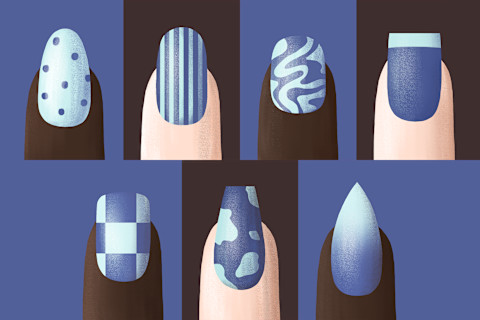
Quick disclaimer: While you can achieve these nail shapes on your own (except for one, you'll see), the first four shapes are most conducive to a natural nail. The final three shapes are modern and bold, yes, but they often need something artificial to support the nail—i.e., gels or acrylics. It's not impossible, but the first four are certainly easier to tackle.
With that, let's dive in.
Round
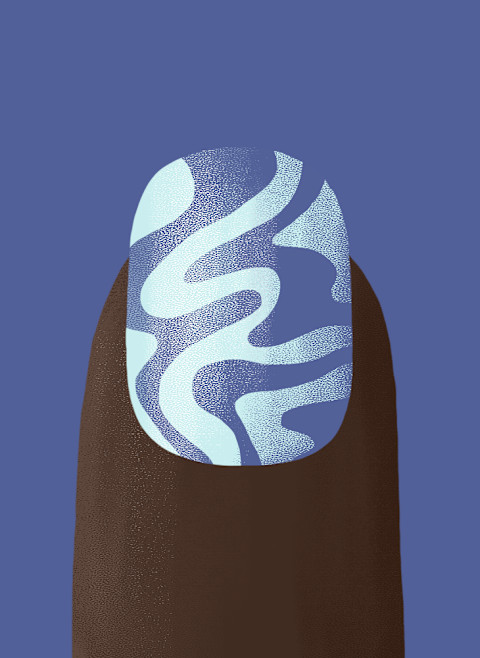
A classic shape, round nails are, well, round at the tips with no sharp angles on the sides—it's a great shorter-length style. To file your nails round, Amy Lin, the founder of sundays—a nail care brand focused on wellness—suggests starting at the side of the nail and filing toward the center, in the same direction. "When you notice one side getting rounder, move to the other side of the nail," she says. The result should yield a perfect half-circle on your fingertip.
Square
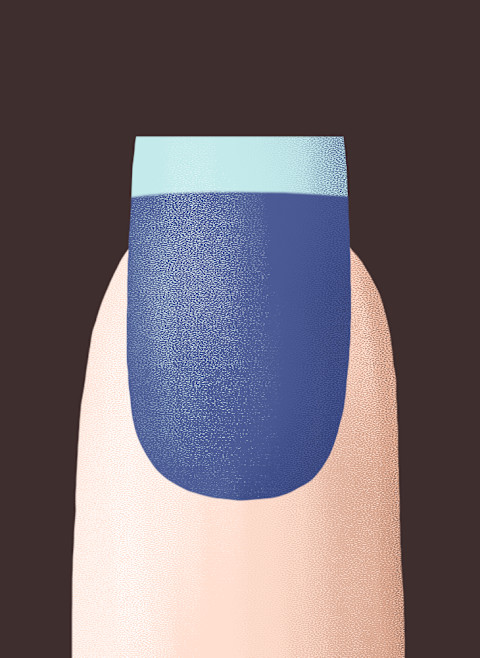
On the opposite end of the spectrum, we have square-shaped nails. These have defined, sharp corners and a geometric, modern feel. "If you want a square shape, start filing from the middle," says Lin (just make sure to approach it at an angle, lest you snap the nail plate). Don't touch those corners—let those edges remain angled and sharp.
With square nails, it can be tempting to file the sides vertically to sharpen the shape, but as Elle warns above, you never want to dig into those cuticles.
Oval
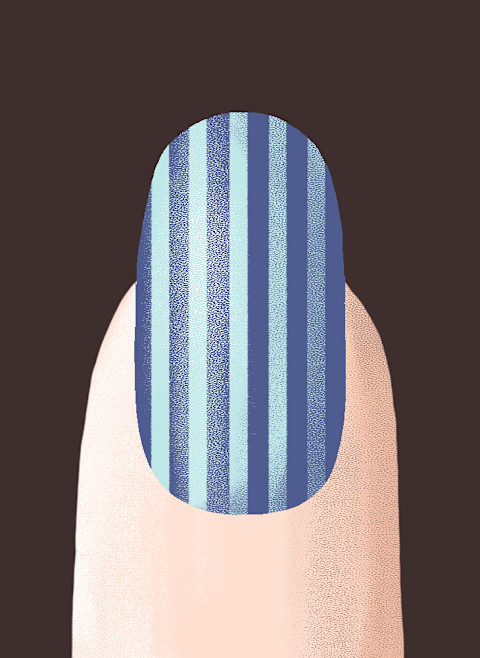
According to Lin, this traditional shape elongates the fingers and is oh-so natural-looking. "If you'd like to achieve an oval shape, file your nail at a diagonal in an egg-like shape, really going in on the sides," she explains. You'll likely need some length to create an oval shape, ideally reaching just beyond the fingertip; otherwise, it'll turn into more of a squoval. "It won't work on a short, short nail," notes Elle.
Squoval
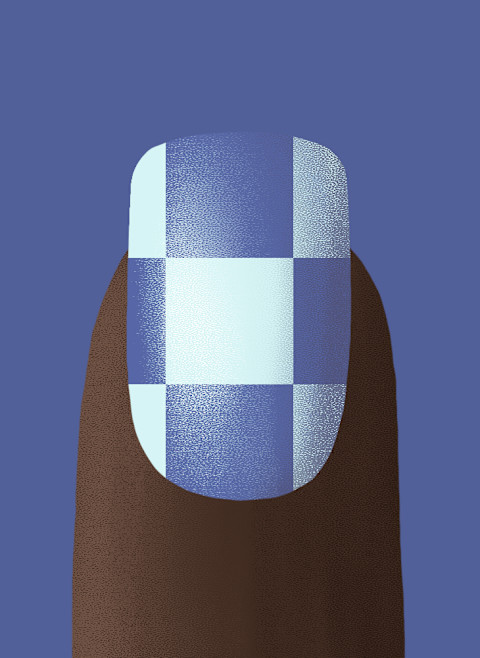
A mixture of square and oval shape (get it?), "squoval" nails have a flat, squared-off tip with rounded corners. A popular choice (it closely mimics many people's natural nailbeds), it's great for elongating the fingers without putting in too much work. "Start by filing the top of your nails straight across," says Lin. "Then go in on the sides to round the corners of your nails."
Stiletto

Now, we've reached the shapes that aren't so easy to achieve on a natural nail. A stiletto isn't impossible to file down yourself—your nails just have to be quite long already. That's because they're filed down to a sharp needlepoint, like the eponymous slim heel—they can easily collapse without any acrylic or gel to sculpt the shape and support the structure. "It's not impossible," says Elle. "But will it maintain? Possibly not."
If you are going to attempt a stiletto on your natural nail, "We recommend you start by trimming the edges of the nail with a nail clipper at a diagonal," says Lin. Then file the sides to sharpen the tip of the nail, making sure to alternate between sides to make sure they're even. "This nail shape is really for the brave!" If you're attempting this shape on a natural nail, your nails also must be quite strong to begin with—since they're filed down to such a small tip,
Coffin
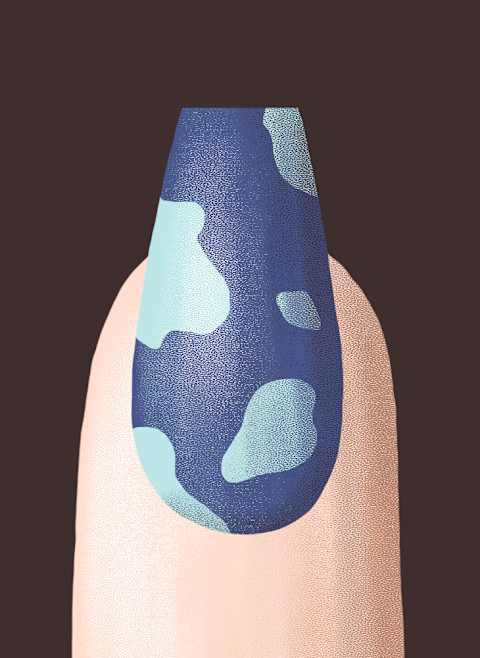
Also called a "ballerina" nail (it resembles a pointe shoe), this shape is super long and tapered, squaring off at the tip. Unfortunately, you can't create this bold shape by filing down a natural nail: "A natural nail will not hold up, and it most likely won't have the length to support the coffin," says Elle. So unless you're opting for a faux-nail procedure, like acrylics or gels, you'll have to skip this one.
Almond
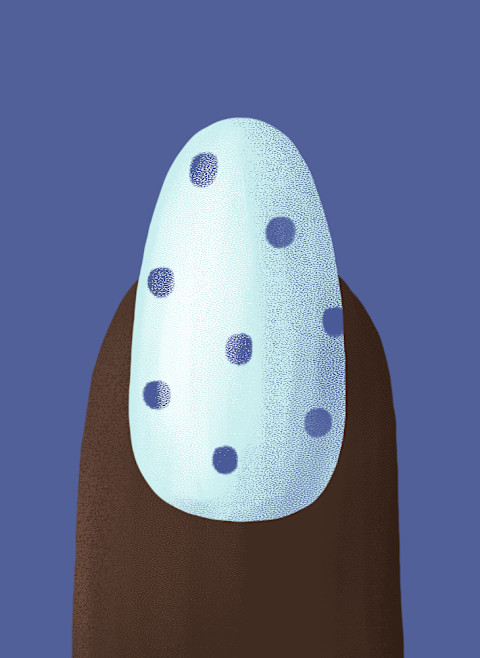
Almond is a combination of an oval and stiletto shape, as it starts off with rounded corners yet tapers a bit at the tip. "An almond shape also requires a bit of a longer nail," says Lin. Elle agrees, "[The nail] will never reach an actual almond if it's too short because you'll be filing in the sides and it'll just collapse."
Similar to stiletto, you'll want to clip the sides of the nails diagonally to cut down on filing time. Then file as you would an oval shape, really focusing on smoothing those sides. "Make sure you're not filing too much on one side and that the sides are even," notes Lin.
How to know which shape is best for you.
It's simple: "One of my rules of thumb is to always mirror-image the cuticles," says Elle. Meaning, if your cuticles have a square outline, the strongest nail shape for you is likely a square. Same goes for round, oval, and so on.
Perhaps this goes without saying, but most people's cuticles don't form a stiletto, coffin, or almond shape. While those shapes are bold and eye-catching, if you're looking for a natural, elongated look you might want to stick to a round, square, oval, or squoval. "The strongest shape is one that's realistic, where you're not going to have a lot of breakage and upkeep," says Elle.
The takeaway.
It takes a bit of work to file down the perfect nail shape—be it a squoval, stiletto, or others listed above—but the end result looks fresh and effortless. Some are easier to execute than others, especially on a natural nail, but strengthening those tips can help you keep them long—so you can expertly mold them to your liking. Ready to try at home? You can master your at-home mani with our guide.
